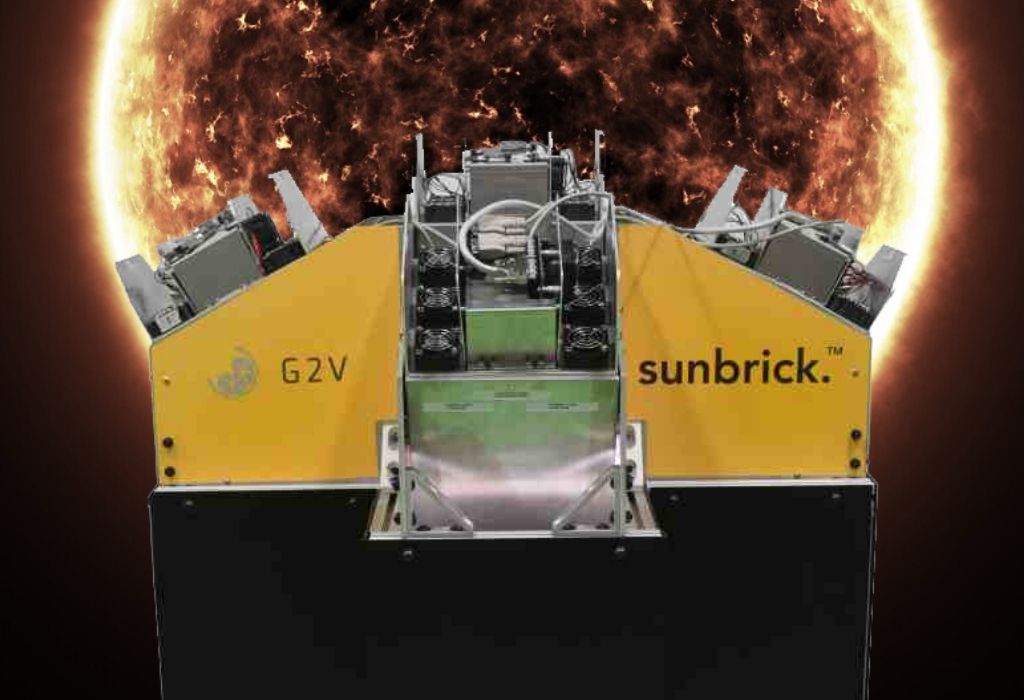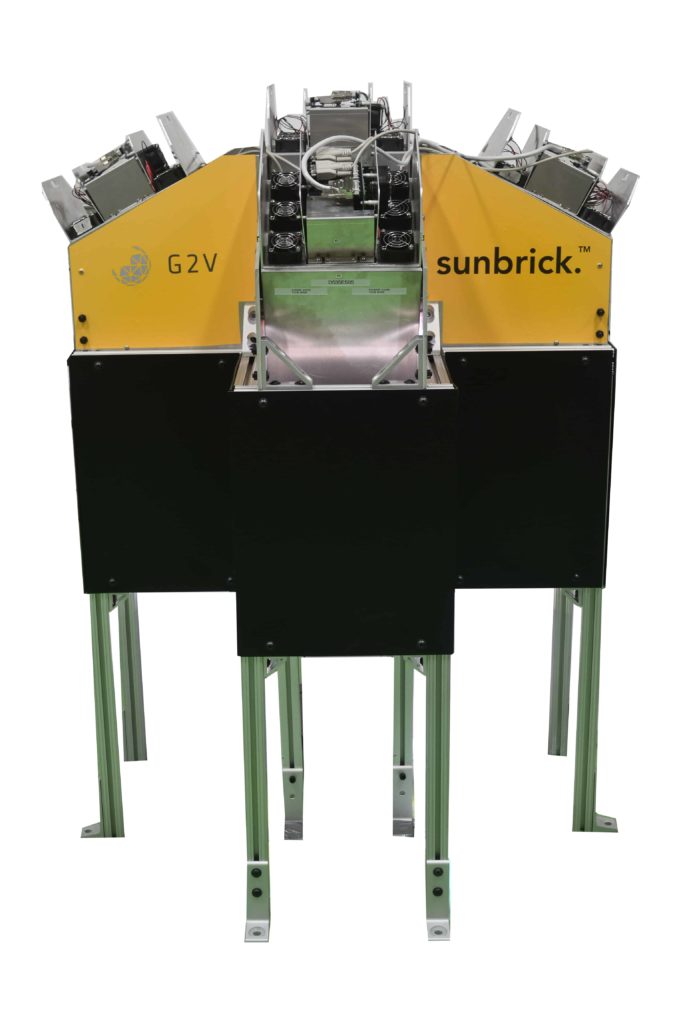Why 4 Suns?
Solar simulators—indoor lights that reproduce the sun’s spectrum—take many forms and serve different purposes, including testing sunscreens, solar cell efficiencies and performance testing of aerospace materials. In most cases, solar simulators are designed to reproduce sunlight as specified in the ASTM E927 or IEC 60904-9 standards — using what the industry calls “1-sun”.
In other cases, however, 1-sun simply isn’t enough. Material degradation processes normally occur over years, and developers and researchers need to accelerate photodegradation processes to test their materials. In the field of concentrated photovoltaics, sunlight is focused to take advantage of expensive, high performance solar cells. Testing these devices requires much more than 1-sun.
So there’s a need for solar simulators that reproduce the sun’s spectrum, but at a higher multiplier of the normal intensity, going from 1-sun all the way to 100 or more suns. Solar simulators are complex devices—multi-sun solar simulators elevate the challenges dramatically, making them much more costly and less common in the market.
Existing Lamp-Based Multi-Sun Systems
The vast majority of existing multi-sun solar simulators rely on Xenon or metal halide gas-discharge lamps. These lamps are bright enough to produce several suns, but have several disadvantages.
- The bulbs degrade over time, causing inconsistent light output and recurring replacement costs.
- They produce a great deal of heat, a thermal component of a spectrum not present in normal sunlight.
- Finally, the spectral match to the sun’s spectrum is usually achieved with glass filters, which are not only expensive but unable to compensate for bulb degradation.
LED Technology for Multi-Sun Systems
LED technology can solve the problems caused by gas discharge lamps.
- LEDs have a significantly longer lifetime—on the order of 50,000 hours as opposed to 1,000 hours for a gas discharge lamp.
- They are very efficient, producing a narrow spectrum and little excess heat.
- LEDs are small and can be combined to produce a desired spectrum, leaving you the flexibility to tune the spectrum to your heart’s desire.
LEDs are an emerging technology that will overtake other lighting technologies in all sectors in the coming years. While LEDs have many advantages, they have not yet taken over the solar simulator market, because reproducing the sun’s spectrum is one of the most demanding lighting applications in the world.
Engineering LEDs to achieve a 1-sun performance target requires deep understanding of electronics, thermal management, and precise software control to deliver reliable, repeatable illumination.
Reliable solar simulation means having a spectrum that closely matches that of the sun’s, as well as a very flat illumination field over the area of interest, and an output that is stable over time.
These three parameters are quantified by spectral mismatch, spatial non-uniformity, and temporal instability, and determine whether or not an instrument achieves the highest standards for all three to become Class AAA. G2V Optics has been leading the application of LED technologies for Class AAA large area solar simulators.
When the opportunity to develop a 4-sun, large area simulator was presented, we were excited at the fundamental engineering challenge this presented. Building a high quality 1-sun LED solar simulator is something only a few companies in the world can do.
Until now, nobody has built a 4-sun LED solar simulator.
There are several reasons why multi-sun LED solar simulators hadn’t yet made an appearance in the market. Making LEDs that cover every portion of the spectrum is quite a challenge for material science development, and some spectral regions are more easily manufactured than others. LED-based solar simulators also require a large number of LEDs to be carefully controlled, which demands advanced designs for everything from the electronics to heat management.
Each LED needs to be treated like one lamp of a bulb-based system, so you can imagine how it’s significantly more complex than running one very bright Xenon-based lamp.
The advantages that LED technology offers, however, are significant for all applications of solar simulators. Spectral match is always required for a high-quality solar simulator, and it’s even more important for multi-sun systems.
Because data from multi-sun experiments are used to extrapolate or predict behaviour over long periods of time, initial errors and inaccuracies in the spectral match imply amplified errors for the extrapolations. Therefore, for accurate accelerated testing, you need exceptional spectral match to the solar spectrum.
This spectral matching is an area in which gas discharge lamps are limited, since their specific emission peaks outside the solar spectrum are a fundamental property of the gases and physics of the discharge process. LEDs, however, can be assembled to produce exactly the spectrum desired and a much better spectral quality. A multi-sun LED solar simulator therefore offers the potential for highly accurate accelerated material testing, which will in turn yield tremendous gains in both insight and development speed for researchers and designers.
G2V Delivers High Performance at High Intensity
While it was by no means a simple task, G2V leveraged its experience and leadership in developing high-quality LED solar simulators to produce a 4-sun system based on G2V’s existing Sunbrick technology platform. The result was one of the most advanced solar simulators in the world.
A cloudy day… on Mercury: Users of conventional solar simulators know that the illumination area can get quite warm; you can feel the intensity on your skin if you put your hand into the beam. Just like stepping outside on a hot day, sunlight (simulated or not) makes an impact you can feel. The intensity under the 4-sun simulator is literally out of this world—150% of the solar intensity at Venus, and almost half of the intensity at Mercury, the planet closest to our sun. Materials under the simulator heat to 85 degrees Celsius, requiring care to handle safely.
Engineered Sunlight with Engineered Air Flow: Even though LEDs produce less heat than conventional bulb technologies, managing the heat load for a 4-sun simulator was a challenge. Maintaining low temperatures and high performance required cooling design techniques—including computational fluid dynamics to maximize the air flow.
Eye and skin safety: G2V specializes in assessing photobiological safety requirements. This instrument’s high intensity and large area require special care. The system was designed with these requirements in mind, unlocking the instrument’s potential for the end user.
LED selection: G2V continually searches the globe for the best LED technologies, looking for high-power, high-efficiency LEDs at all wavelengths. The 4-sun simulator was possible because of G2V’s specialized LED knowledge, developed over many years of designing solar simulators.
Proprietary LED drivers: G2V has engineered proprietary LED drivers that enable individual control of up to 36 channels per Sunbrick, allowing fine tuning of the spectrum and the control necessary to achieve the precise spectra required by the customer.
A Paradigm-Shifting 4-Sun LED Solar Simulator
The intensity is variable and linear from 0.1-suns all the way to 4.0-suns, and can be adjusted digitally. This opens the door for automated, scripted testing over a range of intensities that very few if any other solar simulators can provide, enabling unprecedented cyclical testing.
With a solar simulator that better replicates sunlight over large areas, experiments and research around the world shift to a new level of quality and insight. G2V continually strives to deliver better quality light to enable better research.
With this multi-sun system, not only is accurate experimentation enabled, but accurate accelerated testing.
Phenomena that would normally take months or years to study can now be investigated on much shorter timescales, affording deeper, longer-range insights into materials used in outer space or on Earth. Solving the ever-increasing, wider-scope challenges facing humanity in the twenty-first century demands better experimentation and in turn better instrumentation.
With this 4-Sun LED solar simulator, G2V has ushered in a new paradigm for innovation and discovery.

